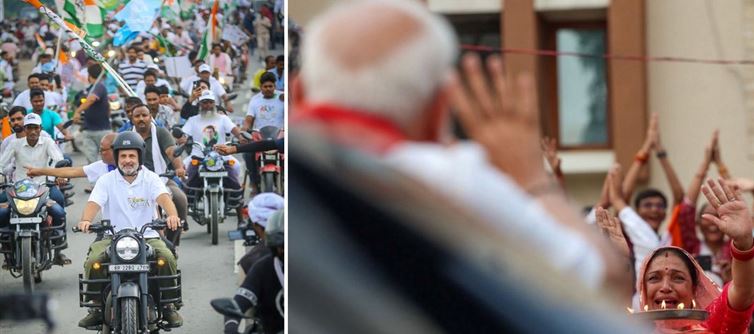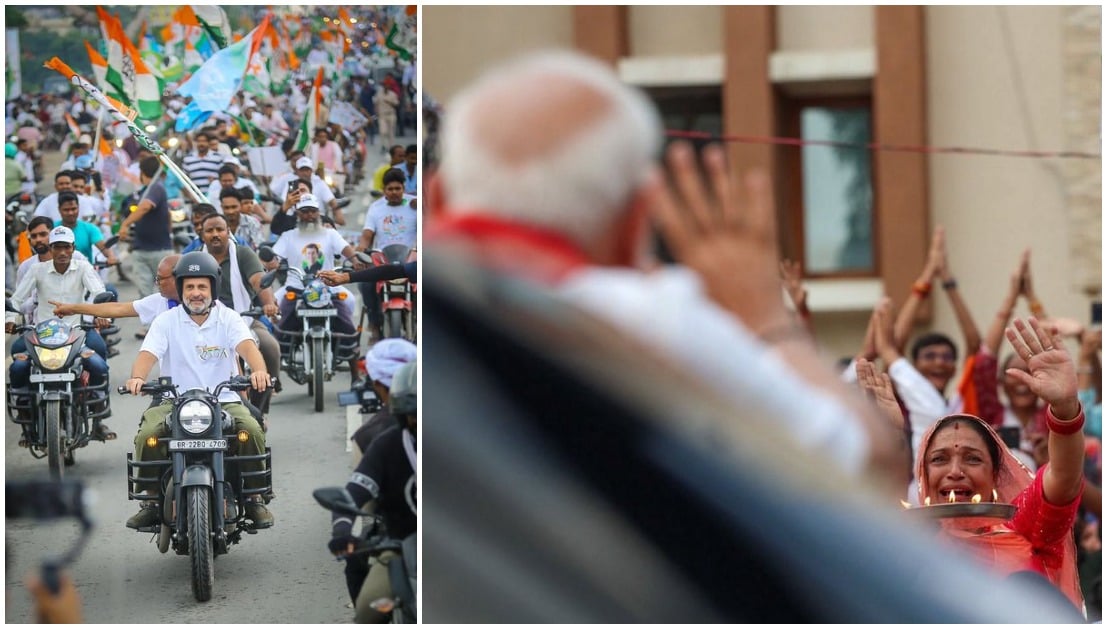
In indian politics, few events generate as much public enthusiasm and visibility as roadshows. Be it prime minister Narendra Modi’s grand roadshow in ahmedabad or rahul Gandhi’s dramatic entry on a bullet bike with thousands of followers, these spectacles continue to dominate political narratives. Far from being mere optics, roadshows have become a necessity in today’s political climate.
Take PM Modi’s ahmedabad roadshow as an example. The event was nothing short of a festival, with massive crowds lining the streets to greet him. Traditional drums, banners, and flowers created a charged atmosphere, turning the city into a stage of celebration. This was not just a symbolic gesture—it came tied with developmental promises worth ₹5,400 crore, including infrastructure upgrades, electric vehicle initiatives, and railway modernization. The roadshow thus served a dual purpose: displaying mass connect while also reinforcing Modi’s vision of growth for gujarat and India.
Meanwhile, rahul Gandhi’s roadshow on a bullet bike sends a different but equally powerful message. It projects him as youthful, approachable, and adventurous. Unlike the more structured and state-backed roadshows of Modi, Rahul’s campaign style is informal and people-centric. By riding a bike, he communicates a break from traditional elite politics, appealing to young voters who crave authenticity and spontaneity. His message is clear—he is not above the people, he is one among them.
From a political necessity perspective, roadshows serve several functions. They mobilize massive crowds, energize party workers, and sustain momentum in high-stakes elections. They provide leaders with visibility in an era where optics matter as much as policies. media coverage of these events extends their reach beyond the immediate crowd, transforming local gatherings into national narratives.
Moreover, indian voters often view leaders through an emotional lens. A handshake, a smile, or even a wave from a passing vehicle can foster lasting loyalty. Roadshows amplify this emotional connection in ways policy speeches cannot. They keep the leader visible, accessible, and memorable.
Both Modi and rahul, despite their contrasting styles, understand this well. Modi’s roadshows emphasize scale, order, and vision, while Rahul’s stress spontaneity, energy, and youthful connect. Together, they illustrate the dual power of roadshows: reinforcing political strength and shaping narratives of accessibility.
In short, roadshows are not just about showmanship; they are essential to democracy’s functioning. They bring leaders and people face-to-face, sustaining the bond between representation and public aspiration. As indian politics continues to evolve, roadshows will remain a central theatre where emotions, promises, and politics converge.




 click and follow Indiaherald WhatsApp channel
click and follow Indiaherald WhatsApp channel